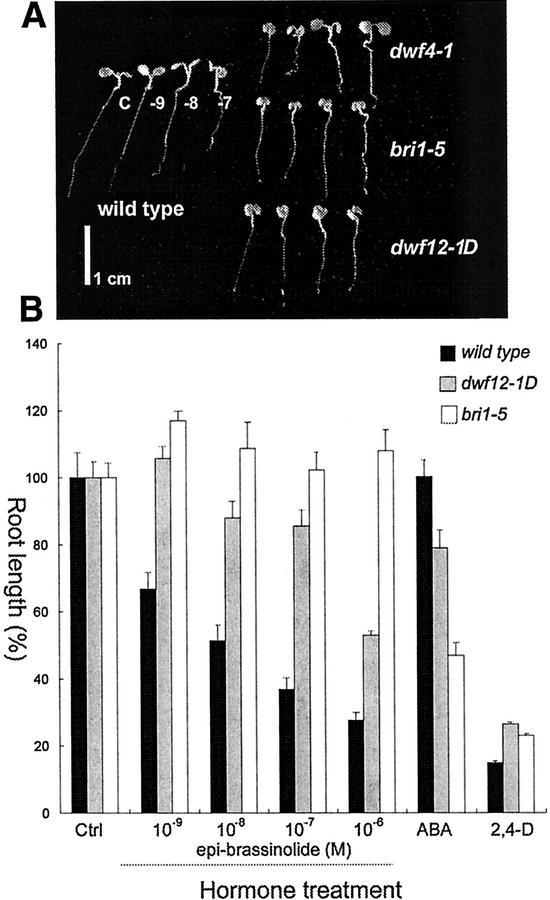Figure 2.
A, Dose response of wild type, dwf4-1, bri1-5, and dwf12-1D to epi-BL. Different doses of epi-BL are C, control; −9, 10−9 m; −8, 10−8 m; and −7, 10−7 m. A wild-type seedling at 10−7 m shows typical BR responses, such as elongated hypocotyls and petioles as well as shortened root length. In addition, the BR biosynthetic mutant dwf4-1 is fully rescued to a wild-type phenotype at a concentration as low as 10−8 m, showing expanded cotyledons and an elongated hypocotyl. However, dwf12-1D seedlings did not respond to epi-BL regardless of the concentrations, confirming that dwf12-1D is defective in sensing or downstream signaling. Similar insensitivity is shown also in the bri1-5 mutant. Unit bar = 1 cm. B, Quantitative analysis of the hormone dose response tests. Root growth inhibition of wild type is decreased linearly and proportionally to the epi-BL concentration. In contrast, both dwf12-1D and bri1-5 are significantly insensitive to epi-BL at all concentrations tested. The two signaling mutants also show altered responses to abscisic acid (ABA) and auxin in that they are more sensitive to ABA but slightly resistant to auxin. Percent root length represents the ratio of the root length grown on BL-supplemented media over the root length grown on the control media containing the same amount of 95% (v/v) ethyl alcohol used to dilute BL from a 4 mm stock solution.

